Roomingle is a digital platform designed to simplify the process of finding compatible roommates for shared living spaces.
The app aims to alleviate the challenges and inefficiencies that many people face when moving to a new place and seeking suitable roommates.

According to MYMOVE, during the pandemic, the number of movers who filed address forwarding with USPS exceeded 15.9 million in 2019 and 2020 in the United States.
Moving to a new place is an inevitable aspect of life, and it presents a multifaceted challenge. While some people feel more troubled about the physical act of moving, others may worry more about adapting to a new environment and living situation.





Who are the movers?
Age 25-34, non-home owners in United States. - MoveBuddha
Why did they move?
For the cheaper housing prices, family-related reasons, and employment-related reasons.
- MoveBuddha
What was the challenge?
Searching, planning, packing & moving, and learning the new area.
- YourDost
Based on the secondary research, I recruited 6 participants in the age group 20-35, non-homeowners






I’d like to explore ways to help people who are looking for roommates to
The process of moving to a new place is already stressful, and finding compatible roommates for shared living spaces can add to the burden. Current methods for roommate pairing are challenging and inefficient, often resulting in mismatched living arrangements and unsatisfactory experiences.
There is a need for a more efficient and effective solution to facilitate roommate matching and ensure a positive living experience for all users.
Before jumping into brain-storming, I studied three prominent roommate pairing services: Roomi, SpareRoom, and Roomster.
Here are the key findings from our analysis:
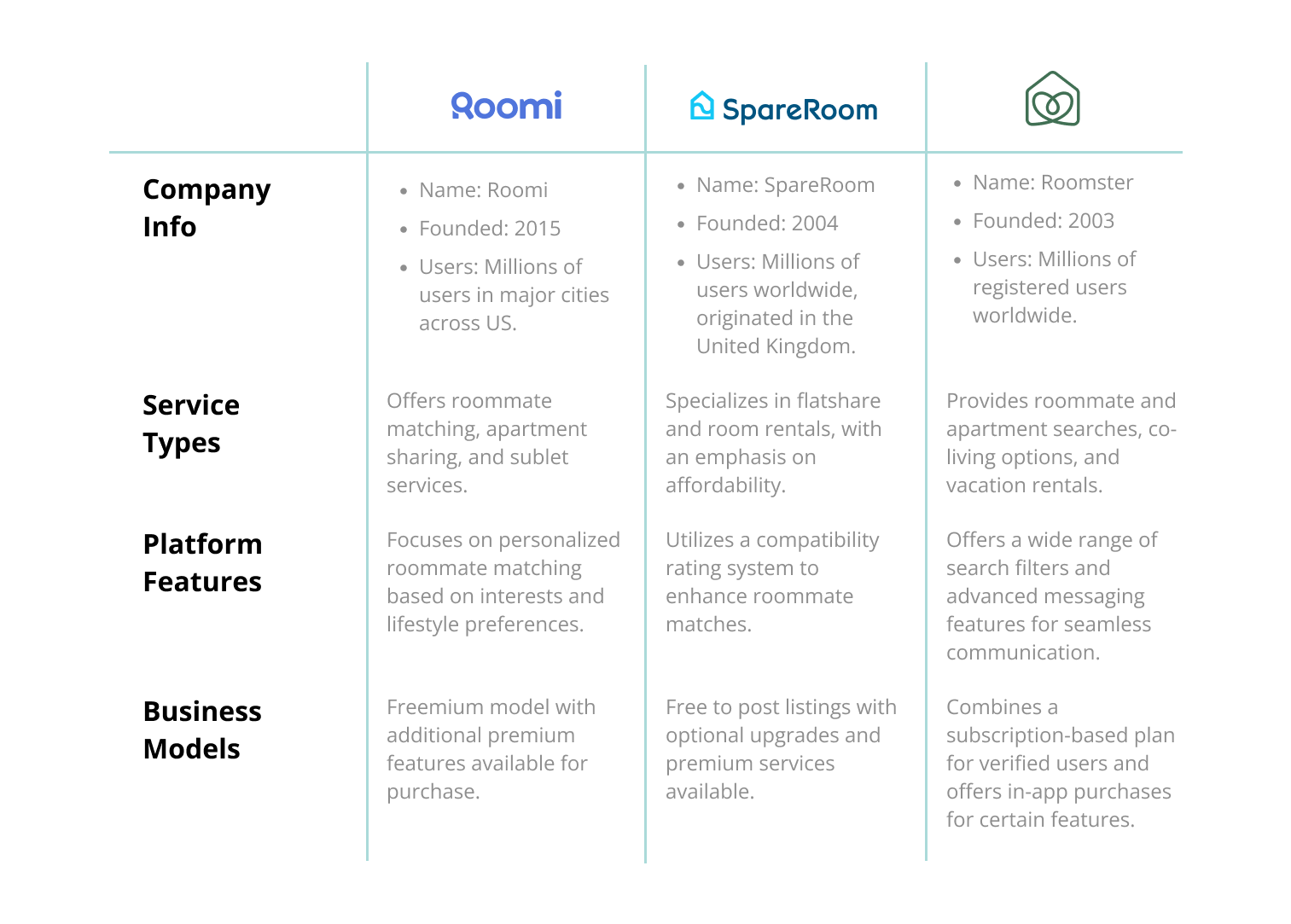


















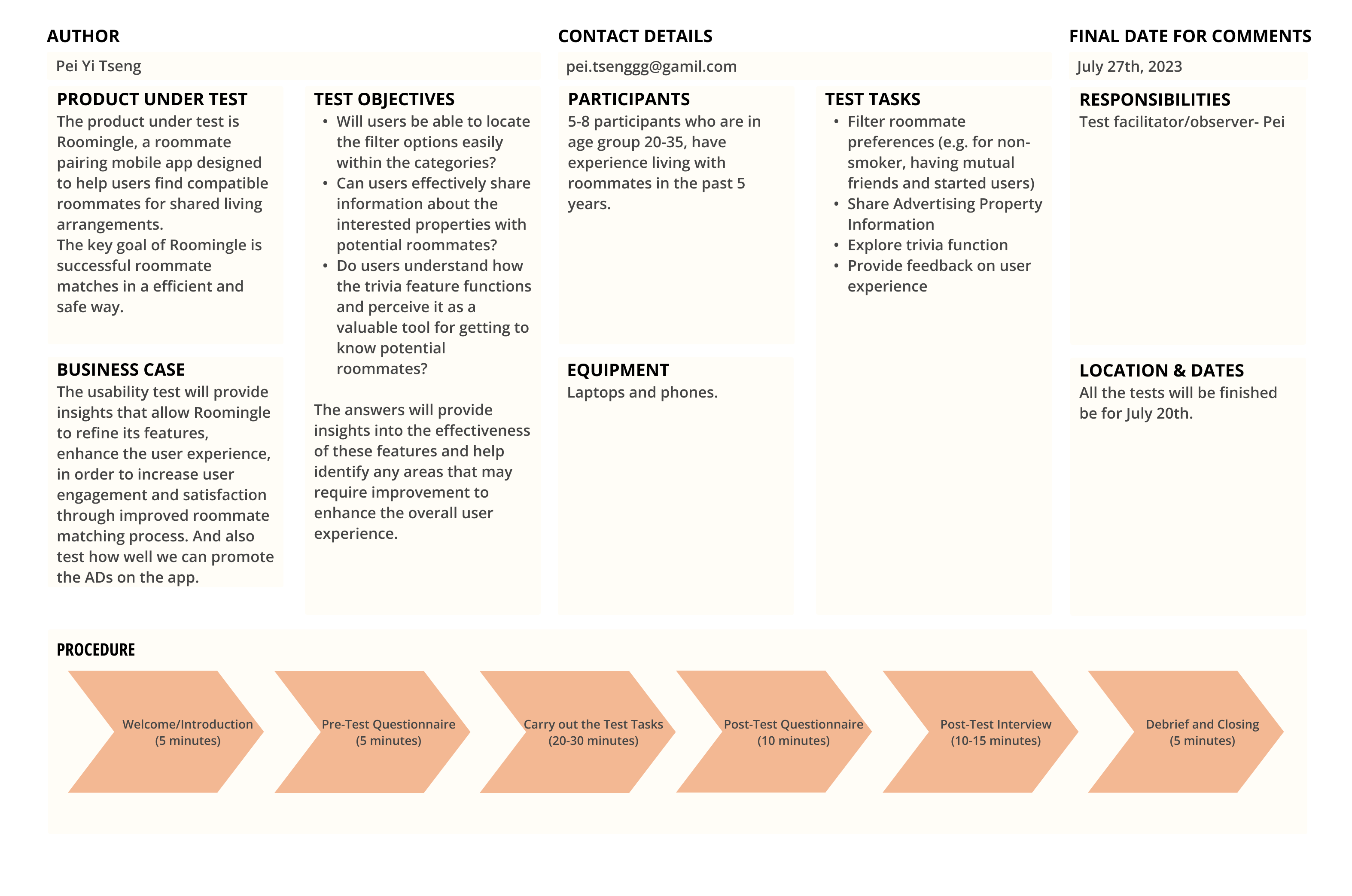
Product Under test
The product under test is Roomingle, a roommate pairing mobile app designed to help users find compatible roommates for shared living arrangements. The key goal of Roomingle is successful roommate matches in an efficient and safe way.
Business Case
The usability test will provide insights that allow Roomingle to refine its features, enhance the user experience, in order to increase user engagement and satisfaction through improved roommate matching process. And also test how well we can promote the ADs on the app.
Test Objectives:
The answers will provide insights into the effectiveness of these features and help identify any areas that may require improvement to enhance the overall user experience.
Participants
5-8 participants who are in age group 20-35, have experience living with roommates in the past 5 years.
Equipments
Laptops and phones.
Test Tasks:
Responsibility
Test facilitator/observer- Pei
Dates
All the tests will be finished be for July 20th.
Procedure:
In general, all participants successfully completed the tasks within 10 minutes, finding the design patterns similar to popular dating apps, which are familiar to our target users (age 20-35). The explanation about the prototype and task timers helped prevent excessive clicking around.
From the limited sample of 5 participants, I observed that women showed a stronger preference for chatroom tools (such as shared calendar and trivia) compared to men. During the interviews, men frequently questioned the need for chatroom features, suggesting a preference for quicker interactions and a desire to move away from the app promptly.
Building on valuable user feedback, we iteratively fine-tuned elements including bookmark icons, filter language, grammar, and navigation bar icons, ensuring a more polished and aesthetically pleasing user interface.
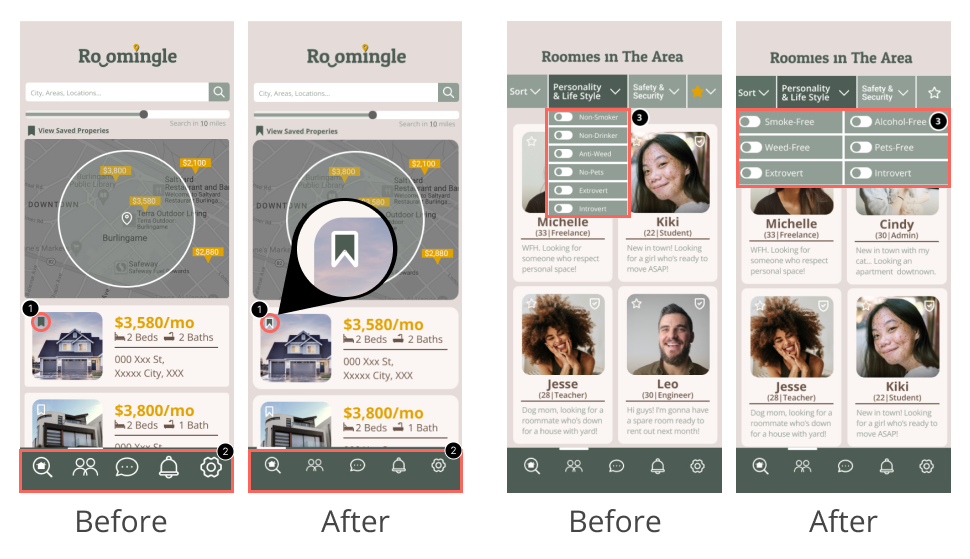
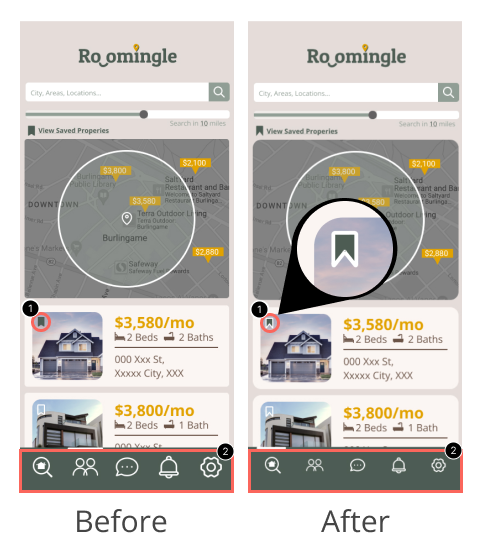

After an iterative and user-centered design journey, the final product encapsulates the culmination of user research, ideation, and design refinement. This represents a comprehensive solution that harmoniously addresses the identified user needs, promising an enhanced and intuitive experience in finding the ideal roommate and shared living space.
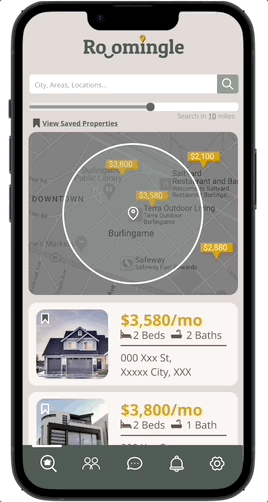
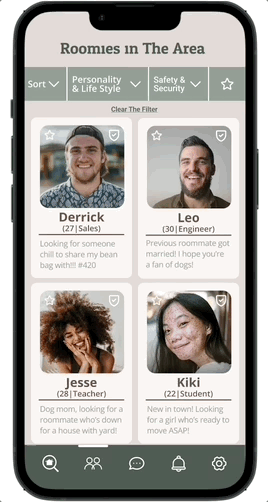
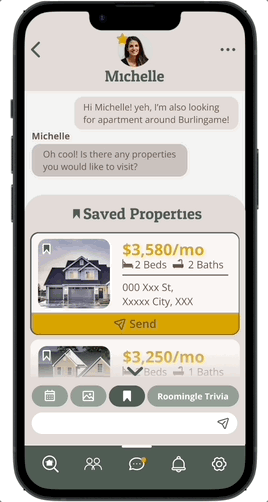
The Roomingle project has garnered positive feedback, particularly for the intuitive filters that enhance roommate preferences, ensuring a seamless experience around mutual property interests. The integration of chat room features and sorting filters has resonated well, offering a dating site-like experience. Additionally, the trivia feature has proven to be a valuable tool for users to explore compatibility with potential roommates in a fun way.
However, with more time, we'd focus on the following areas for improvement:
With these enhancements, Roomingle can provide a more user-centric and efficient solution for finding compatible roommates.

